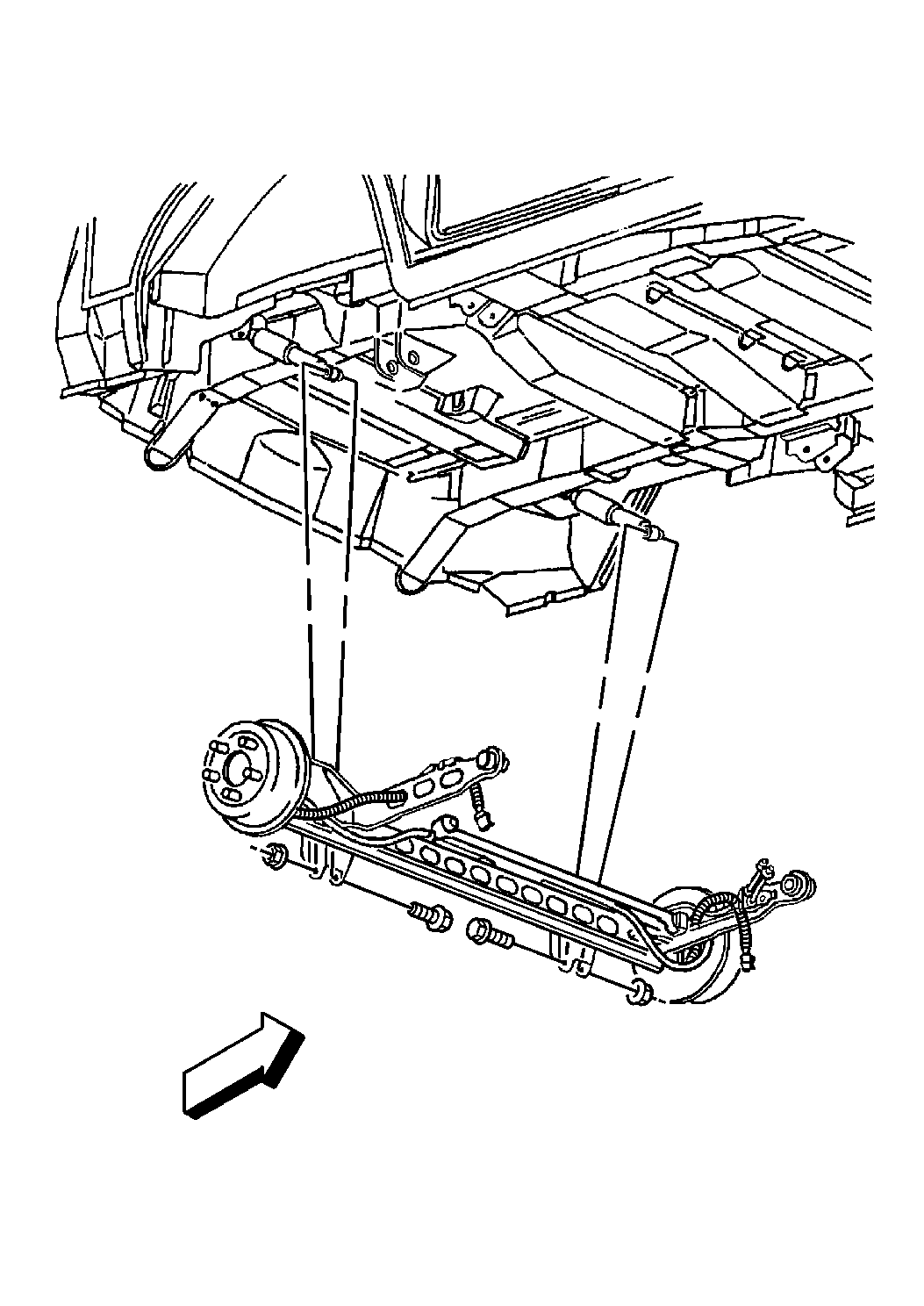For 1990-2009 cars only
Removal Procedure
- Raise and support the vehicle. Refer to Lifting and Jacking the Vehicle .
- Remove the rear tires and wheels. Refer to Tire and Wheel Removal and Installation .
- Use a utility stand in order to support the rear axle.
- Remove the rear axle coil springs, the spring seats, and the spring insulators. Refer to Coil Spring Replacement .
- Remove the brake calipers. Refer to Rear Brake Caliper Replacement .
- Disconnect the intermediate brake hoses from the rear axle brake pipes. Refer to Rear Brake Hose Replacement .
- Disconnect the wheel speed sensor electrical connectors.
- Use the utility stand in order to lower the rear axle.
- Remove the utility stand.
- Lower the vehicle until the rear axle is approximately 13 mm (0.5 in) above the ground.
- Remove the rear axle control arm bolts and nuts.
- Remove the rear axle.
- Remove the brake pipes and the brake hoses from the rear axle. Refer to Rear Brake Hose Replacement , if applicable, and Brake Pipe Replacement .
- Remove the wheel bearing/hub. Refer to Rear Wheel Bearing and Hub Replacement .
Warning: When removing the rear springs, do not use a twin-post type hoist. The swing arch tendency of the rear axle assembly when certain fasteners are removed may cause it to slip from the hoist which may cause personal injury.

Installation Procedure
- Install the wheel bearing/hub. Refer to Rear Wheel Bearing and Hub Replacement .
- Install the brake pipes and the brake hoses to the rear axle. Refer to Rear Brake Hose Replacement , if applicable, and Brake Pipe Replacement .
- Position the rear axle under the vehicle.
- Install the control arm bolts.
- Install the control arm nuts and tighten to 220 N·m (162 lb ft) .
- Raise and support the vehicle. Refer to Lifting and Jacking the Vehicle .
- Use the utility stand in order to raise the rear axle.
- Install the rear axle coil springs, the spring seats, and the spring insulators. Refer to Coil Spring Replacement .
- Install the brake calipers. Refer to Rear Brake Caliper Replacement .
- Install the park brake cables to the rear axle. Refer to Parking Brake Rear Cable Replacement .
- Install the intermediate brake hoses to the rear axle brake pipes. Refer to Rear Brake Hose Replacement .
- Bleed the brake system. Refer to Hydraulic Brake System Bleeding .
- Connect the wheel speed sensor electrical connectors.
- Install the rear tires and wheels. Refer to Tire and Wheel Removal and Installation .
- Lower the vehicle.

Caution: Refer to Fastener Caution in the Preface section.
Note: This is a prevailing torque type fastener. This fastener may be reused ONLY if:
• The fastener and its counterpart are clean and free from rust.
If the fastener does not meet these criteria, REPLACE the fastener.
• The fastener develops 4 N·m (37 lb in) of torque/drag against its counterpart prior to the fastener seating.
